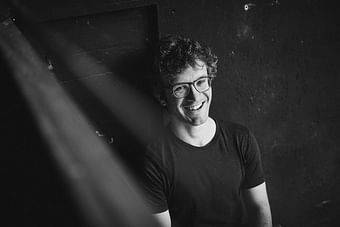In conversation with Christoph Altstaedt
Christoph Altstaedt made his debut at the Vienna Volksoper with Johannes Brahms’ Ein Deutsches Requiem, choreographed by Martin Schläpfer. Now the versatile musician, who is held in high esteem by many renowned orchestras in Europe and the USA, returns to Vienna as conductor and pianist for the Vienna State Ballet premiere of The moon wears a white shirt.
When did you first fall in love with dance?
I discovered dance relatively late, when I had the privilege of working with Martin Schläpfer as Kapellmeister at the Deutsche Oper am Rhein. His programmes presented the whole range of modern dance and I remember many of his own choreographies, but also works by George Balanchine or Mats Ek, which enchanted and influenced me.
What does the premiere of The moon wears a white shirt mean to you?
I’m really looking forward to this evening because it’s so musically varied. We cover a wide range from baroque, virtuoso violin playing to Alfred Schnittke and modern Hungarian folk music with the ears of György Ligeti. It will be entertaining and enjoyable. I’m also looking forward to playing continuo myself in Locatelli’s Violin Concerto and to performing as a lied accompanist in the Ligeti Essays.
What is your favourite moment in the production process?
There are actually two moments: The moment of promise, when the ideas for a project come together at the beginning and the team thinks together about what is possible. I always find this “thinking in all directions” phase very rewarding because it is particularly creative and open. And then I love the so-called final rehearsals, when all the forces of the theatre come together for the premiere. That has a special energy.
What is the role of dance in today’s world?
I think dance is more accessible to many people than music. Almost everyone has danced or can intuitively appreciate the athleticism of dancers. I like the transfer of the metaphysical power of music to the physical aesthetics of the human body. Dance allows me to experience music on an additional level and enriches my listening experience. Dance is a great way for an opera house to reach out to a broad spectrum of society and invite people to come to the opera who have never come before.
